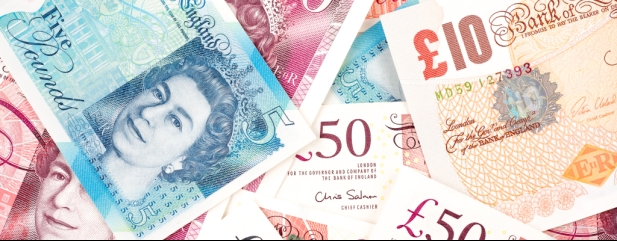Archived article
Please note that tax, investment, pension and ISA rules can change and the information and any views contained in this article may now be inaccurate.
How to turn £2,000 into £5,000 with a little effort and some risk

Even if we haven’t tried it, most of us are familiar with the ‘couch to 5k’ challenge, aimed at getting us off our backsides and improving our physical health and wellbeing, so can we do the same with our finances?
In this article we aim to show how, with a little bit of effort and varying degrees of risk, you can turn £2,000 into £5,000.
GET YOUR EMPLOYER TO HELP
Assuming you don’t need instant access to the £5,000 once you have raised it, one of the easiest ways to reach your target is to make contributions to your workplace pension.
Today, most workplace pensions are defined contribution schemes with the option to pay some of your net salary into your pension pot, also known as a ‘salary sacrifice’ scheme.
Every month, you pay a small percentage of your salary into the pension – which is automatically deducted for you before tax – and your employer adds money to the scheme as well.
Say on top of your starting pot of £2,000 you pay £25 per month into your workplace pension and that is matched each month by your employer.
You end the first year with £2,600 in your pot – your original £2,000 plus £300 deducted from your salary and another £300 paid in by your employer.
Following this same pattern, in the second year your pot increases to £3,200, in the third year it will be £3,800, in the fourth year £4,400 and, lo and behold, in the fifth year you’ve reached your £5,000, yet it’s only cost you £1,500 in contributions. It would be reasonable to assume you achieve some growth in the value of your investments as well during this period.
In practice, there are rules that state you must make a minimum level of contributions if you earn up to £50,000, so your monthly payment is likely to be more than £25, meaning you will reach your target well within five years.
Employers must pay at least 3% of your salary into the pot and including your contribution it must add up to at least 8% of your salary – implying you pay 5%. In reality, the amounts could be higher for you or your employer because of your pension scheme rules.
It’s also worth bearing in mind that the Government will make contributions to your pension scheme in the form of a tax refund, which is 20% for basic-rate taxpayers.
For the example above, in a net pay/salary sacrifice scheme it would simply be a £25 contribution straight from your pre-tax salary. Instead of getting tax relief added to the pension contribution, you get the relief by having a lower tax bill on the salary paid to you after pension contributions are deducted.
In a relief at source scheme, it would be £20 paid into your pension and £5 tax relief claimed from HMRC by the pension scheme.
GO FOR HIGH YIELD
If you have £2,000 in an ISA rather than a pension and want to get to £5,000, you can lean on one of the wonders of investing known as the power of compounding.
Compounding is when you earn interest on both the money you save and the interest you earn on your savings.
As an example, if you can find a selection of stocks and bonds which yield an average of 10% then you will get a big tailwind from the power of compounding.
You do need to bear in mind that, as a rule, investments with high yields tend to be riskier than investments with low yields and the high yield is there to compensate for that extra risk.
If your starting pot in your ISA is £2,000, and you receive 10% in interest or dividends once a year, after one year you will have £2,200.
However, after two years you will have £2,420, 10% interest on your original £2,000 and 10% on your interest from the first year.
After three years you will have £2,662 as your savings and interest keep compounding, until after 10 years you have £5,188.
In practice, dividends and interest tend to be paid more frequently than once a year so your investments will compound slightly faster and you could reach your target of £5,000 in less than 10 years. Hopefully there will also be some growth in the value of your investments from the price of shares or funds in your portfolio.
As long as you are using a tax-efficient product like an ISA, you won’t have to pay tax on any capital gains or dividends, although it is important to factor in the cost of reinvesting your income every year, which is typically quite small but does affect your returns.
TAKE A GLOBAL APPROACH
One of the most popular choices for those just starting out on their investment journey is investing in a broad spread of shares through an exchange-traded fund, also known as an ETF.
ETFs are funds designed to track an index (i.e., a specific basket of assets) but with much lower costs than owning each individual stock – annual management charges can be as low as four or five basis points, that is 0.04% or 0.05%, which makes them an extremely economical way to get access to markets.
The MSCI World index, which includes 1,600 companies across more than 20 countries, is about the broadest global index you can find, and the Lyxor Core MSCI World ETF (LCWL) – which tracks this index – has an annual charge of just 0.12%.
For that you get exposure to technology giants like Alphabet (GOOG:NASDAQ), Amazon (AMZN:NASDAQ) and Microsoft (MSFT:NASDAQ), as well as big UK, European and Asian companies.
Over the five years to 31 March 2023, the ETF had returned roughly 47% which works out at 8% per year, so if it continues to compound at the same rate in the future, on paper it would take 12 years to turn your £2,000 into £5,000. Naturally if you made additional contributions to your ISA, perhaps a small amount every month, this would help to reach your target sooner.
You also need to bear in mind there is a degree of risk involved. Global stock markets don’t go up 8% per year every year as annual returns are more volatile and less predictable.
For example, the MSCI World index went up 27.7% in 2019, 15.9% in 2020 and 21.8% in 2021, but it lost 18.1% last year, so it could take more or less than 12 years to reach your target.
Important information:
These articles are provided by Shares magazine which is published by AJ Bell Media, a part of AJ Bell. Shares is not written by AJ Bell.
Shares is provided for your general information and use and is not a personal recommendation to invest. It is not intended to be relied upon by you in making or not making any investment decisions. The investments referred to in these articles will not be suitable for all investors. If in doubt please seek appropriate independent financial advice.
Investors acting on the information in these articles do so at their own risk and AJ Bell Media and its staff do not accept liability for losses suffered by investors as a result of their investment decisions.
Issue contents
Editor's View
Feature
Great Ideas
News
- Travel stocks fly high as the sector finally enjoys a post-pandemic recovery
- US rate hikes fuel banking crisis and a surge in gold and bitcoin
- Heavy selling in Paramount on big streaming losses and a dividend cut
- Baltic Classifieds is motoring ahead with online sales growth
- Why consumer health spin-out Kenvue climbed in strong market debut

 magazine
magazine








